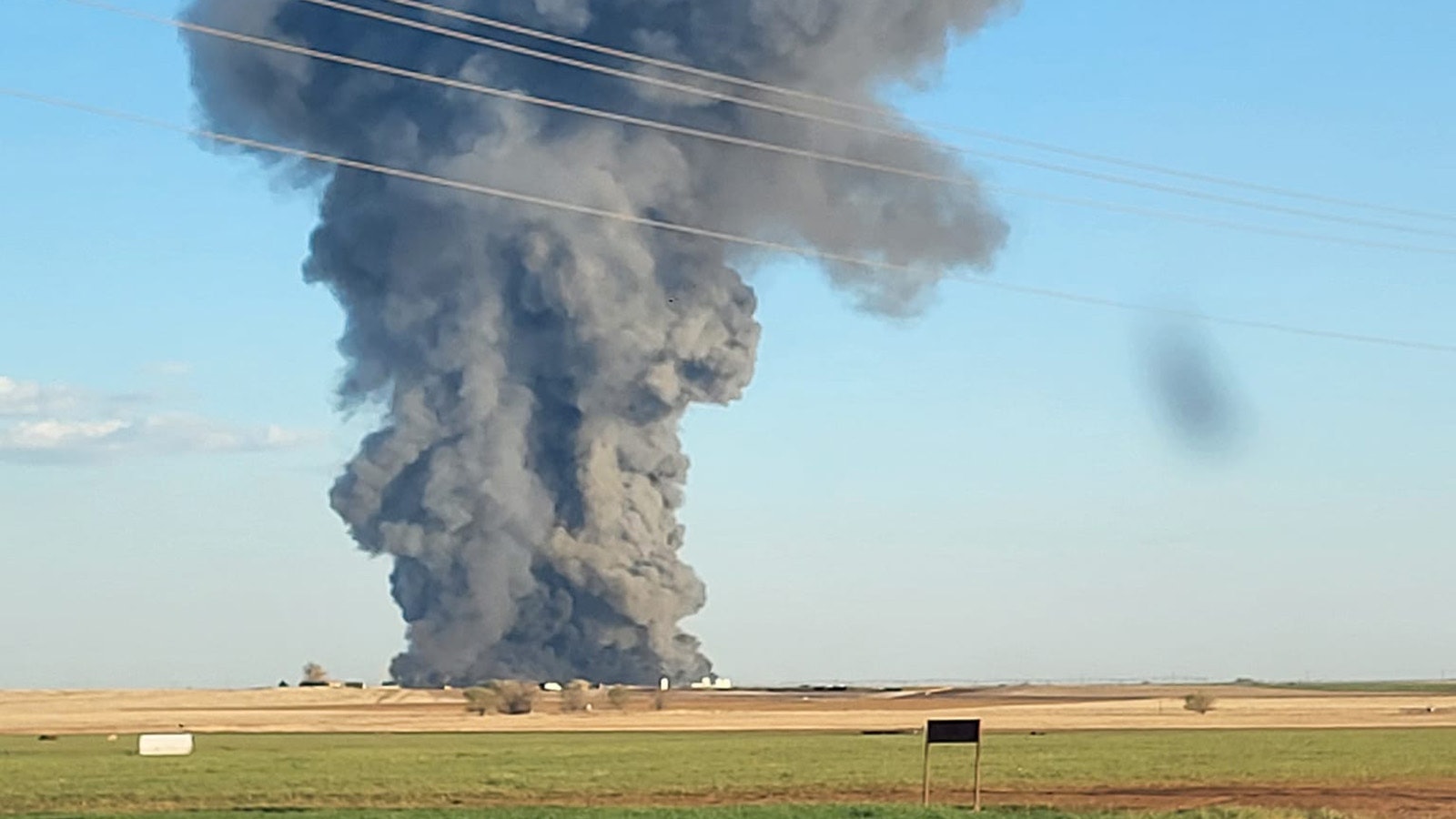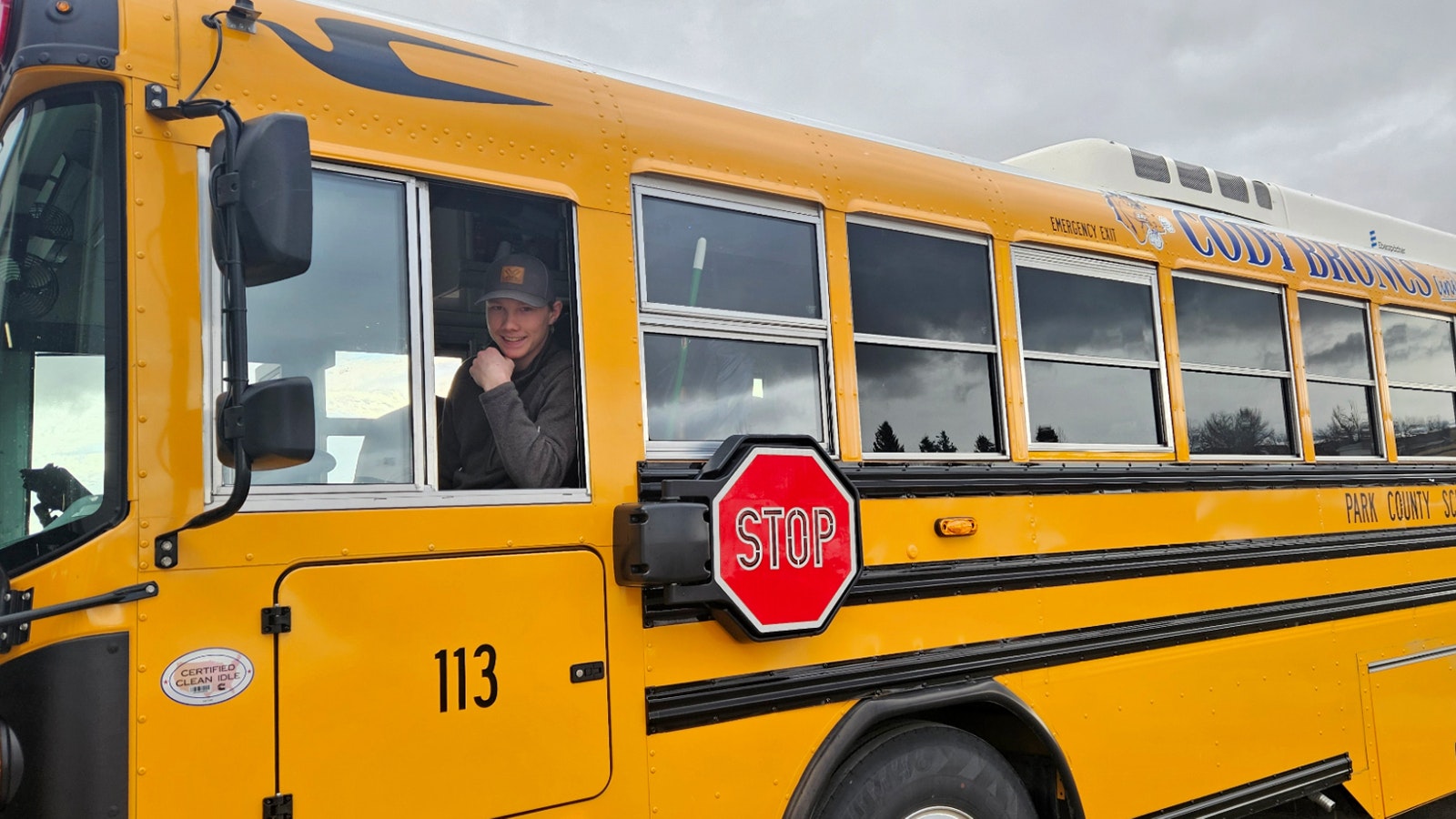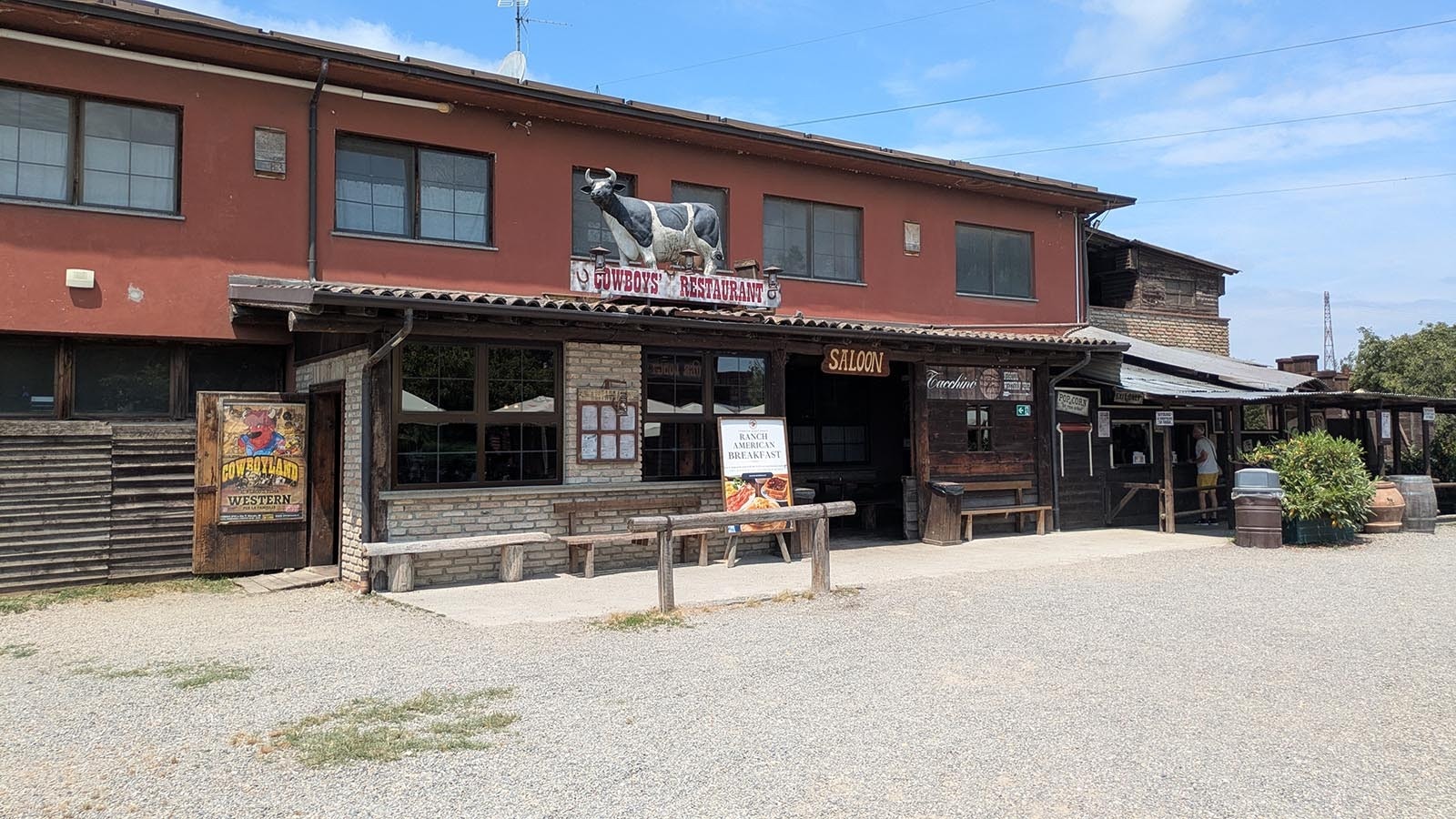A massive explosion and fire that ripped through a Texas dairy farm facility Monday and killed 18,000 cattle was “horrific,” but a disaster on that scale unlikely in Wyoming, say Cowboy State cattle ranchers.
“It’s horrific to think of losing that many cattle all at once,” Jim Magagna, executive vice president of the Wyoming Stock Grower’s Association, told Cowboy Daily.
The disaster at a huge dairy farm in Castro County, Texas, is thought to be the largest single cattle killing ever.
One dairy employee was left in critical, but stable, condition and no other people were reported hurt. Many of the cattle died because they couldn’t escape holding pens as the blaze spread, according to reports.
Not Sure What Happened
Magagna, along with Park County Dairy Farmer Scott George and veteran cattle rancher Dennis Sun, told Cowboy State Daily that there had been a lot of talk about the disaster in their circles, but nobody was certain exactly what caused it.
“Maybe they had a methane digester that blew up on them. I just don’t know,” said George, whose family runs the George Farms dairy,with roughly 600 cows, between Cody and Powell.
Large diaries burn methane from cow manure to generate electricity on their farms, George said. However, his family’s farm isn’t large enough to do that, so such an explosion isn’t a concern for them.
A large stash of improperly stored nitrate-based fertilizer also could possibly cause an explosion fire, said Sun, who is publisher of the Wyoming Livestock Roundup.
The construction of some of the buildings on the Texas dairy farm might have played a part, Magagna said.
“From what I’ve read, the insulation in some of the buildings where the cattle were being held caused the fire to spread quickly,” he said.
Unfathomable Loss
George said the financial blow of losing 18,000 dairy cattle at once is too much to comprehend.
“It would be horrible,” he said. “Right now, dairy cows – just the ones being culled for slaughter – they’re worth $1,500 apiece just to turn them into hamburger.”
Healthy, productive milk cows can easily go for $2,000 or more each, he said, adding that cows generally start producing milk when they’re 2 years old and peak about age 5.
“It will probably destroy that business,” he said of the disaster. “There just aren’t that many replacement dairy cattle available.”
Sun said ranchers typically have insurance, but that doesn’t mean the Texas dairy will recover its losses.
The exact cause of the explosion and fire will have to be determined, he said. And if human negligence is proven, insurance companies might not pay out.
Now The Gruesome Work Begins
“When you first read about this, you think, ‘It can’t be true,’” Sun said. “We’ll have to wait and see what they find out about how it happened. The only thing they know for sure right now is that they’ve got a lot of dead cows to dispose of.”
George said disposing of even one dead cow is daunting enough, so he can’t imagine what it will be like trying to handle 18,000 of them.
“We have to use our front-end loaders to move carcasses, it’s not something you can just pick up,” he said. “It will also depend on the breed of the cattle. A grown Jersey cow weighs about 1,200 pounds. Holsteins can weigh 1,500-1,800 pounds.”
Then there’s the matter of what to do with a literal mountain of carcasses.
“They will have to bury them or burn them. Or, they may have to take them to a landfill and have them composted,” George said. “But still, that many carcasses all at once … oh, my.”
And taking them to a landfill won’t be cheap, he added. In Park County, landfill fees can run $150-$200 per carcass.
Wyoming Hasn’t Seen Such A Catastrophe Since The 1800s
Weather and disease have historically been the two biggest cattle killers in Wyoming, Sun said. And these days, vaccinations keep disease from wiping out cattle in large numbers.
And as bad as this winter has been, Sun said he hasn’t heard of any huge losses of cattle.
The last time Wyoming ranchers faced losses on the scale of the Texas dairy disaster was during the “Big Die-Up,” Sun said.
That was during the winter of 1886-87, when a series of vicious blizzards killed hundreds of thousands of cattle across Wyoming and the surrounding regions. In some cases, entire ranches were wiped out.
The Wyoming cattlemen said their hearts go out to the dairy farmer in Texas facing such a catastrophic loss.
“Sometimes when more is found out about these things, it turns out to be not quite as bad as people initially thought it was, we can certainly hope that’s the case here,” Sun said.





